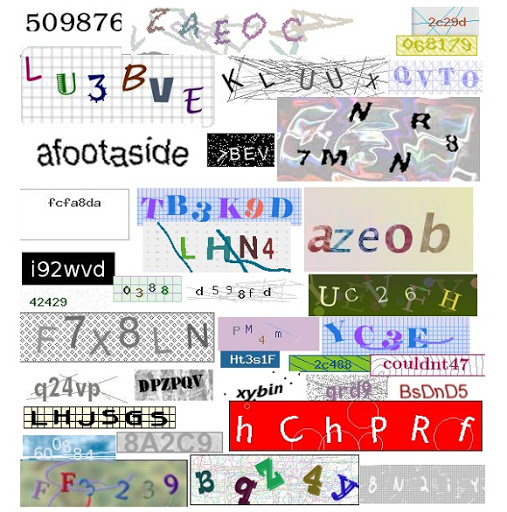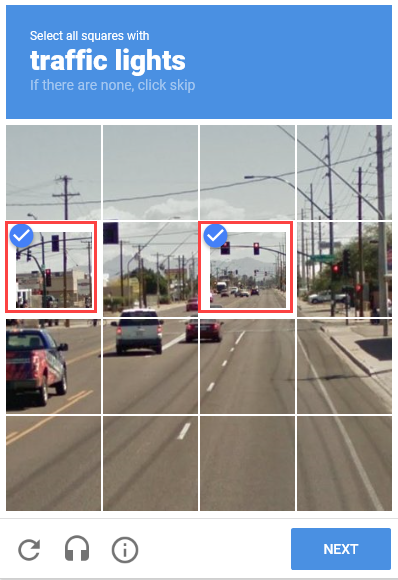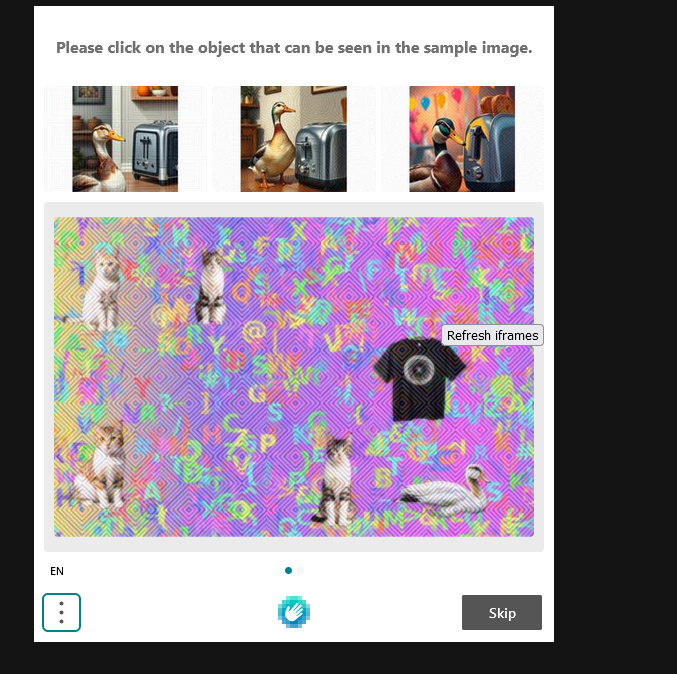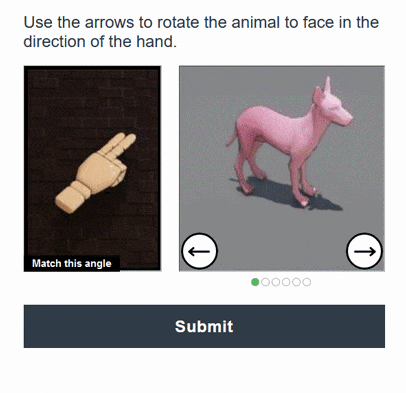Recognize Captcha
Description
This action can be used both for automatically solving captchas via services and for manual input.
A captcha is an automatically generated test to check if a user is a person or a computer (bot). The simple versions usually show a distorted string of letters and/or numbers that might be colored, noisy, warped, or overlaid with lines and random shapes.
 |
|---|
| Examples of text captchas. |
There are also other types of captchas, where you not only need to type in symbols from an image, but complete some action. For example, you might be asked to find buses, palm trees, motorcycles, or other objects; solve a puzzle; put things in a certain order; or sort items.
More captcha examples:
 |  |
|---|---|
| ReCaptcha | HCaptcha |
 |  |
|---|---|
| FunCaptcha | CloudFlare |
How to add to your project?
There are two ways:
Through the emulator/device window.
Right-click the captcha image → "This is a captcha!"

Through the context menu.
Add action → Android → Recognize captcha.

You'll have to download the captcha image to your computer first, then specify its file path in the action.
Working with the window
"Basic" tab
The window looks different depending on how you open it:
 |  |
|---|---|
| When opened through the emulator/device window | Through context menu |
Recognition Module
Choose the service from the dropdown menu to send your captcha for solving. We recommend CapMonster Cloud as it's the most reliable and stable.
MonkeyEnter.dllThis module is for manually solving captchas. No automatic solving service will be used.
Element Search
There are two ways to search for elements on a page:
- Classic
By HTML element parameters: tag, attribute, and its value. - xPath
Using XPath expressions, which lets you create more flexible and layout-proof data searches.
Recognize from file
Enter the path to the captcha image you want to solve. You can also use a variable.
Save to variable
Add a variable for the response.
Settings
Click the gear button to open settings, where you can adjust data for recognition modules.
"Advanced" tab
 |  |
|---|---|
| When opened through the emulator/device window | Through context menu |
Wait
- Pause before executing
Specify a FROM and TO range in seconds. The delay before starting will be chosen randomly within this range. - Wait for element no more than
If the captcha isn't found within the time here (in seconds), the action will finish with an error (exit via the red branch).
Module Parameters
You can use this field to provide extra parameters or conditions for solving the captcha, such as:
- Case sensitivity;
- Cyrillic recognition;
- Math value;
- Multiple words.
parameter_name=parameter_value.
Multiple values are separated by &.
Examples for CapMonster Cloud API:
CapMonsterModule = ZennoLab.vk(choose a particular text module);CaseSensitive = true(case-sensitive);Numeric = false(captcha isn't only digits);Math = true(task has a math operation).
Scale
This lets you increase or decrease the size of the captcha image you send for solving.
Stitching captchas
Some captchas are made up of multiple images, so you may need to combine them for a quick and accurate solution.
Check Stitch captchas for the first item. Then, right-click each following item and choose Attach to captcha from the context menu.
Each click creates a new action. On the last one, don't forget to check Final captcha.
Async recognition
This setting lets you avoid waiting for a response from the service and keep your template running.
It creates an Await captcha recognition action. It has no settings, just a Go to start of recognition button, which jumps you to the main captcha-solving action. This is especially handy if these actions are far apart in your workspace. In the main action, there's a button to go To end of recognition.
How it works:
- The template gets to the main Recognize captcha action.
- Captcha is sent to the service.
- Template keeps running up to the Wait for captcha action.
- Waits for the service to respond.
- When the result comes, you can save it to a variable.
Save a URL for complaints
This option is for submitting a complaint to the service if a captcha is solved incorrectly. Some solvers let you request a refund for a failed captcha.
In the field, enter the name of the variable where you'll store the service URL for complaints.
If you complain and request refunds too often, the service might block you.
First, try to determine why failures happen and fix those issues.
Saving
Here you can save both the captcha image and its answer to a specified folder.
Available parameters
- Directory. Indicate the folder where the images will be saved. You can use variables.
- Answers. Choose from two ways to save the answers:
- In the filename
Handy, but sometimes not possible, since Windows doesn't allow certain characters that may appear in some answers.
- In a file
The captcha image will be saved ascaptcha(X).png, where X is the captcha's sequence number.
A text filecaptcha(X).txtwill also be created with the answer for that captcha.
- In the filename
- Ignore answer "sorry". Sometimes, due to errors, the action will return
sorryinstead of a captcha answer. If enabled, the program won't save such captchas.
When creating your own module on CapMonster Cloud.
Usage examples
Typical use
- Right-click the captcha image and pick This is a captcha! from the menu.
1.2. Right after you add this action, the manual solving window will pop up — you can just close it. - Choose the recognition module you want.
2.1. Don't forget to set your API key in the settings and make sure you have funds in your service account. - Now, right-click the field where you need to type the captcha answer and choose Field for captcha recognition result.
3.1. Or manually find the field with the Action Builder and use the Set Value action to put the answer there.
When you need to stitch
For this example, we're using a test page with this HTML code:
...html sample omitted...
Here, each character is a separate HTML element.
- Right-click the first image and choose This is a captcha!
- Turn on Stitch captchas in the action settings.
- Then right-click each remaining image → Attach to captcha.
- In the end, you'll have 4 actions:

- When you run it, the first three actions will collect and combine images, but only the last action will handle the final piece and send it to the service for recognition.
Don't forget to add Math = true to Module Parameters.
Useful tips
Plain text captcha
Sometimes on less protected sites, you'll see captchas that aren't graphic text images, but just written as regular plain text (like in Notepad).
You shouldn't send these to a service — instead just parse them right from the page's text. Use the Text Processing action. Choose the page text, enable parse result, and enter a regular expression as a parameter to parse the data.
Math captchas
You might also see plain-text captchas with math expressions (addition, subtraction, multiplication, division).
You can turn these into images and send them for recognition, or simply use JavaScript from the Your code section.
Put a link to the variable with the math expression in the code field, and you'll get the answer as the result.
Flash captcha
You can also just convert it into a regular image and send it to a service. Find the flash object in the Element Tree, right-click it, and choose This is a captcha!